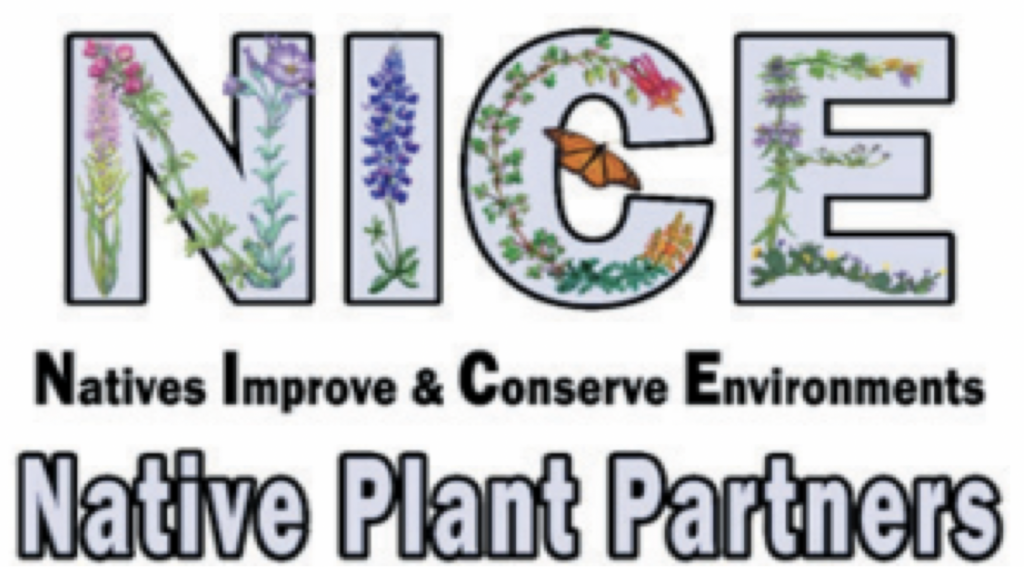
(Natives Instead of Common Exotics)
The NICE Native Plant Partners program is a collaboration between the Native Plant Society of Texas and local nurseries around the state to offer natives that are right for the local environment. It was originally initiated by the Boerne Chapter of the Native Plant Society of Texas in the early 2000’s to promote the use of native plants in neighborhood landscaping. Texas is a large, diverse state and plants that work for one region may not always be the best choice in a different region. Native Plant Partners committees run by our local chapters create a list of Plant of the Month natives and encourage participating local nurseries to provide availability of those plants. The Native Plant Society chapter then helps promote the Plant of the Month through its website and newspaper articles, signs at the point of sale and other means. Often an information sheet on the plant is available at participating nurseries.
The original logo and slogan designed by the Boerne Chapter is featured at the top of this article. In 2019, the NICE! Program was adopted as a State NPSOT program, with an updated logo and slogan that is featured below.

Below is a list of the local nurseries that we want to recognize as providing native plants for the community.


